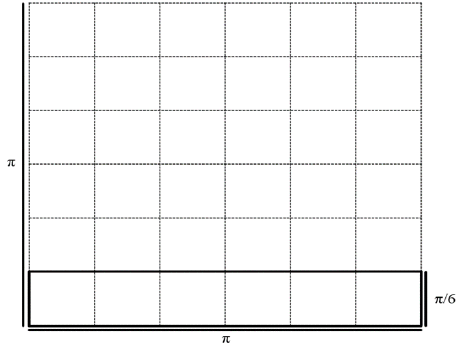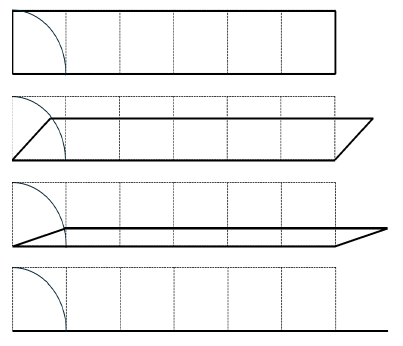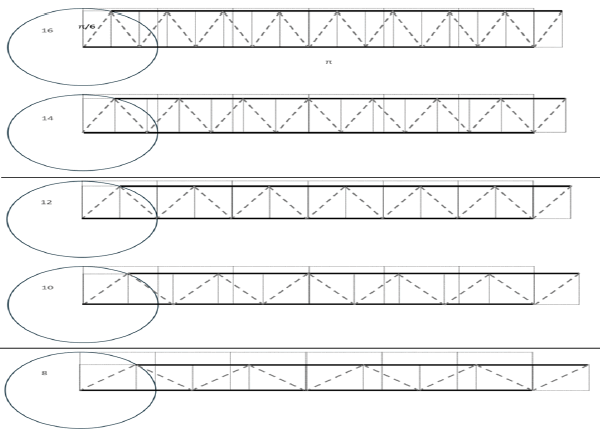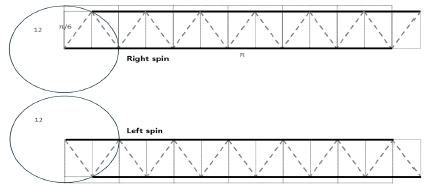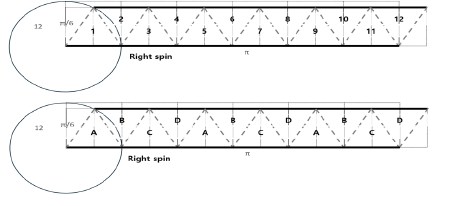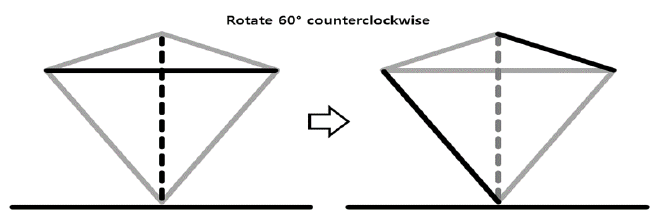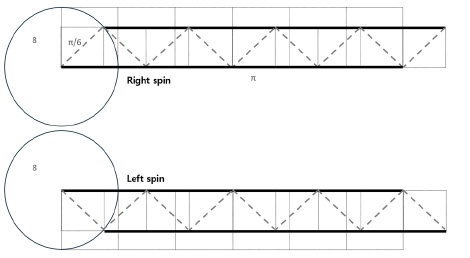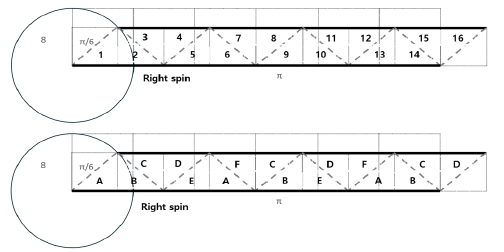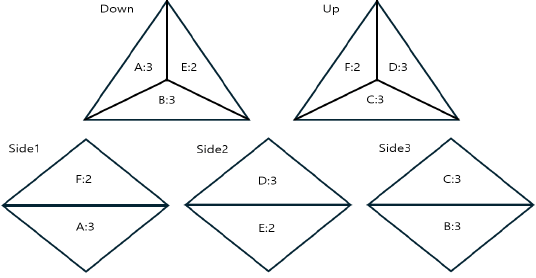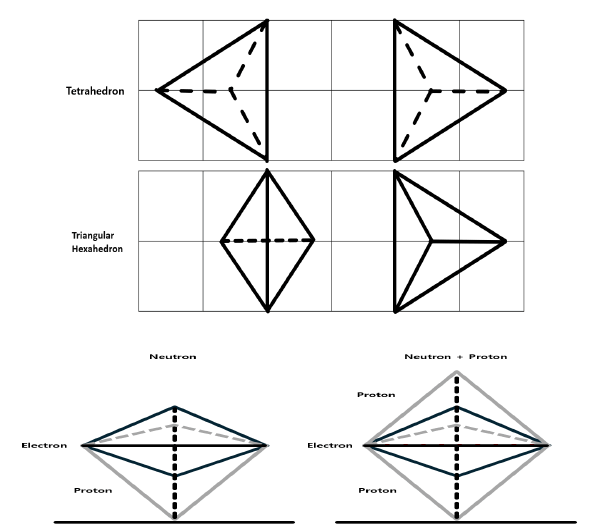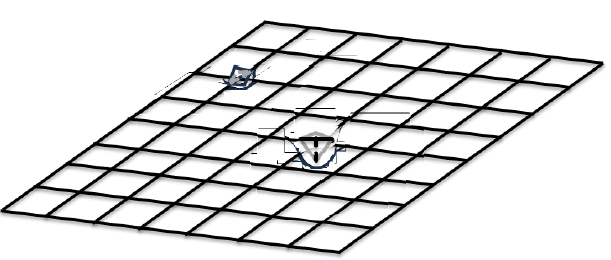Perspective
, Volume: 12( 9)The Reconstruction of Matter: A 2D Photon-Based Theory of Everything
- *Correspondence:
- Hyunho Shin
Independent Researcher, Republic of Korea
E-mail: hyunho.shin@noctuabio.co.kr
Received date: Sept-01-2024, Manuscript No. tspa-24-149324; Editor assigned: Sept-05-2024, Pre-QC No. tspa-24-149324 (PQ); Reviewed: Sept-11-2024, QC No. tspa-24-149324(Q); Revised: Sept-18-2024, Manuscript No: tspa-24-149324(R); Published: Sept-24-2024, DOI. 10.37532/2320-6756.2024.12(9).339.
Citation: Shin H. The Reconstruction of Matter: A 2D Photon-Based Theory of Everything. J Phys Astron. 2024;12(9):339.
Abstract
This paper proposes a new Theory of Everything (TOE) based on two-dimensional photons. The theory assumes that 2D photons exist as a medium throughout the universe, aiming to explain all matter and physical phenomena through this concept. Protons and electrons are formed as 2D photons fold into 3D structures, while dark matter, black holes, and space outside the universe are explained as photons transformed into a 1D state. The paper also points out limitations in existing quantum mechanical interpretations and presents a new perspective on the fixed form of matter. It suggests methods to experimentally verify the role of photons as a medium and offers a new viewpoint on the creation of the universe. This research attempts to explain the essence of matter and the universe through a simple and intuitive approach rather than complex mathematical structures, seeking to overcome the limitations of existing physics theories.
Keywords
Two-dimensional photons; 3D structures; Quantum mechanics; Experimental verification; Dark matter
Introduction
"The root of all problems lies in not finishing what one intends to do, and the greater problem is in not starting at all."
Quantum mechanics is very strange. It is highly restrictive and complex. With various odd analogies, it now seems to have reached the realm of magic. The theories are becoming increasingly complex, requiring advanced mathematics, and the claims made by different theories often diverge significantly. I began with the thought: Could there perhaps be something that could explain reality in a surprisingly simple way?
Particle physics has advanced our understanding of matter by breaking down larger substances into smaller components. This process progressed through stages of theory formulation, experimentation, result interpretation, and theory modification, gradually solidifying our theories about matter. However, has the resulting standard model theory become a perfect explanation that includes gravity? Is our current lack of fundamental understanding about matter simply due to the absence of larger particle accelerators? What we're left with now are numerous particles and mathematically complex interpretations. In this process of fitting theory to experimental results, can we be certain that there wasn't a process of forcing experimental results to fit the theory? Could it be that we've strayed off course by repeating experiments and interpretations without asking fundamental questions? Have we perhaps lost our way by repeating experiments and interpretations without addressing the fundamental questions? Let's go back to the early days of quantum mechanics. The Copenhagen interpretation claimed that the state of a particle is determined when measurement occurs, which, when broadly interpreted, might seem to suggest that the observer's perception creates reality. In my opinion, this is not the intended meaning. The example that has contributed most to misunderstanding this interpretation is Schrödinger's cat thought experiment. Ironically, Schrödinger himself devised this experiment to point out the contradictions that arise when applying quantum superposition and observation problems to the macroscopic world. However, paradoxically, this thought experiment is now frequently used by physicists as an example to explain quantum mechanics well.
Let's consider another example of how an observer plays a role in the microscopic world. Imagine a 6 mm BB pellet (A) moving rapidly inside a sealed pool table. Our eye level is in line with the height of the pool table, so we can't see A's movement hidden behind the rails. To observe, we place another BB pellet (B) in the center of the table. The fast-moving A might hit B and bounce up, or it might change direction and continue moving within the table. Since our view is blocked by the rails, we can't see if it's still moving inside. We can only observe if something bounces up. At that moment, we might see A or B bouncing up, or if they collide too hard, fragments of A or B. By observing whatever bounces up, we make guesses about the location or direction of A or B.
However, modern physics adds a different interpretation. It states that because quantum mechanics describes a probabilistic world, the shape of matter is not fixed (some even say it's zero-dimensional). I found this aspect very difficult to understand. As someone who works with macromolecules in microbiology, I see that the shape of matter often determines its function. There are many cases where the structure of proteins or DNA determines their function. Among physical theories, string theory hypothesizes about the shape of matter, but even that doesn't propose a fixed shape. How can protons and electrons, with their clear characteristics, not have fixed shapes? Looking at the history of quantum mechanics, it seems that early quantum theory didn't prohibit speculation about the shape of matter. When did this restriction come about?
Water, as a substance, can be viewed as H-O-H connections in a 2D form, while its intermolecular connections create a 3D structure, which gives water its material properties. In its liquid state, it exists as a medium. The reason for mentioning this is because in quantum mechanics, matter is viewed as both particle and wave. However, is this understanding correct? If we consider the clear definition of terms, a particle is matter, and a wave is a phenomenon. In quantum mechanics, these terms are used interchangeably, which adds to the confusion. I believe there's a need to clarify this further.
If Newton started with fundamental questions about gravity and Einstein with light to develop their theories, shouldn't we also consider fundamental questions about matter, free from the preconceptions of accumulated theories? Although I'm not a physicist, I began to think about fundamental questions regarding matter, starting from a mathematical formula and its intersection with physics that I came across by chance.
Regarding the shape of matter
While searching through various materials on physics, I learned about a formula in the Riemann hypothesis that coincides with the energy level formula, and I discovered that many mathematicians and scientists are researching the proof of the Riemann hypothesis and its connections. As I am neither a mathematician nor a physicist, I cannot prove this, but two hypotheses came to mind [1]:
•The Riemann hypothesis originates from the prime number problem, which belongs to number theory. If number theory is the mathematics that explains physics, then matter starts from 'a single substance'.
Let's assume there is an initial substance A. As the first substance, we can set all its physical quantities as a standard of 1. Now, let's assume there's another substance B. Would it be possible for substance B to have physical quantities that are integer multiples of substance A? This would be highly unlikely. If substance B had physical quantities that were integer multiples of substance A, wouldn't it just be a combination of substance A rather than a distinct substance B? Therefore, if number theory is the mathematics that explains physics, I formulated the hypothesis that 'matter starts from one'.
•The Basel problem, which precedes the Riemann hypothesis. The answer to the sum of primes, π2/6, must be anumber that explains something in physics.
Among those two hypotheses, while pondering on the second one, the number π2/6, I was doodling in my notebook. Then, from π2, I drew a square with π as its side length, and divided it into 6 strips. Wouldn't the area of this strip be π2/6? And this strip shape, considering the earlier idea that matter starts from one, led me to hypothesize that this might be the shape of that fundamental matter (FIG.1).
I was aware that there was no existing basis for this hypothesis. So, I thought about comparing it with physical quantities that describe the microscopic world, and decided to divide the number π2/6 by the Planck length. Although pi is an irrational number, I calculated using math.pi (3.141592653589793) considering up to 15 decimal places (FIG.2).
ℏ is the Planck constant,
G is the gravitational constant,
c is the speed of light
The result was approximately 1.017744147333327×1035, a number close to 1, which led me to intuit that this number π2/6 might have some physical relevance. This allowed me to continue my line of thought and if this strip-shaped substance is subjected to pressure or tension, couldn't it tilt to create the shapes below? From this tilted parallelogram-shaped strip form created in this way, I continued with the following thoughts (FIG.3):
Even if we consider this strip shape as the 'one' substance that everything starts from, don't we exist in a three-dimensional world? I tried to conceptualize a shape that could be created by 'folding paper' to make this strip into a three-dimensional form.
No matter how much I thought about it, the only way to create a three-dimensional substance by folding one strip was to have a triangle as one face, and it had to be folded into a triangle to create a three-dimensional form that envelops all sides (FIG.4).
Figure 4: Planar view of a three-dimensional shape that can be folded from a strip with an area of π2/6.
Among these folded shapes, I confirmed that only two can form three-dimensional figures: a regular tetrahedron made by folding 12 equilateral triangles, and a triangular hexahedron created from 8 isosceles triangles (or 16 right triangles). These two shapes led me to envision the forms of protons and electrons (FIG.5).
Figure 5: Floor plan created by 12 equilateral triangles. The top has a right spin and the bottom has an opposite spin.
Proton model
The proton can be folded into the shape shown above. Even if the folding direction is reversed, there is no difference in the resulting shape. Therefore, we cannot consider their characteristics to be different. This explains why we can easily utilize what we think of as positrons (which are called the antiparticle of electrons, but I don't view them as such), while antiprotons are difficult to produce. Let's examine how the strip folds to form faces in the following FIG.6.
Side A: 1 > 5 > 9
Side B: 2 > 6 > 10
Side C: 3 > 7 > 11
Side D: 4 > 8 > 12
The shape generated in this way has an equal number of folded faces, forming a stable configuration. This can explain why protons don't form charges within the substance itself, but rather form the center of mass. When viewed as an inverted tetrahedron, it takes the following shape (FIG.7):
Figure 7: View of the tetrahedral model existing in the reverse direction
Let's consider the following regarding why it's an inverted tetrahedron:
• In the 2022 paper 'Evidence for Intrinsic Charm Quarks in the Proton', an additional quark (charm quark) was discovered inthe proton. This brings the number of quarks constituting a proton to four. The newly discovered quark has two peculiarcharacteristics. The charm quark's mass is 1.27 GeV/c², significantly exceeding the proton's mass of 938.272 MeV/c². It'sexplained that the charm quark's mass surpasses the proton's because it includes the strong force. However, if this were true,other quarks should also have high masses like the newly discovered charm quark. Yet, the up quark's mass is 2.2 MeV/c²,and the down quark's is 4.7 MeV/c², both much smaller than the proton's mass. The high mass of the charm quark due to thestrong force cannot be explained when compared to other quarks [2].
• The charm quark in the proton accounts for less than 1% of the proton's total momentum.
These findings contradict the standard model theory of protons being composed of up and down quarks. While this might provide a starting point to explain the previously very small masses of up and down quarks in protons, it seems the standard model theory is not yet ready to revise the idea that protons are composed only of up and down quarks. From this discovery, I became convinced that the proton's shape is an inverted tetrahedron.
The reasons for considering this tetrahedron as the shape of a proton are:
• All faces are folded the same number of times, preventing any inherent tilt in the substance itself. This lack of internalimbalance makes it conducive to forming a stable center.
• The proton is thought to be composed of four quarks: two up quarks, one down quark, and one charm quark discovered in2022. The vertices of the tetrahedron correspond to what we call quarks. Based on the mentioned characteristics of the charmquark, it likely corresponds to the bottom vertex, while the up/down quarks correspond to the upper vertices. If this structurerotates like a top around the bottom charm quark, we can infer that the centrifugal force would offset the mass of the charmquark against the masses of the up/down quarks, resulting in the observed mass of the proton.
One of the reasons for considering the proton as a non-composite particle is related to string theory. The origin of string theory lies in the fact that the equation describing the strong force coincides with the Euler beta function. If superstring theory is related to the strong force, then within the range of 0<1 in this equation, it represents an internal force within a single particle (FIG.8).
If a single substance constitutes a proton, then what we consider the strong force is not the force binding quarks and gluons, and we should redefine the strong force as the internal energy of that substance. The energy required to separate quarks within a proton is estimated to be about 1 GeV. Converting this to joules gives approximately 1.602 × 10-10 J. A proton is formed by folding 12 equilateral triangles three times each. Therefore, we can consider the energy of one face to be 1.602 × 10-10 J / 12 × 3, which is 0.4 ×10-10 J.
The tetrahedron is a very stable structure, but it has an asymmetrical shape. This is the reason why the scattering pattern of protons in particle accelerators appears asymmetrical.
Electron model
The electron is presumed to have the following shape. Unlike the proton's shape, the electron's shape is not identical depending on the folding direction. If this shape is folded in the opposite direction it creates a substance with a shape that points in the opposite direction according to spin. If one side is an electron, the opposite side can be thought of as the substance called a positron (FIG.9-11).
Figure 9: A planar diagram made of 8 isosceles triangles (16 right triangles). The upper part represents right spin, and the lower part represents opposite spin. If the upper part is an electron, the lower part can be viewed as a positron.
Figure 11: Top/bottom/side views of the electron, showing the order of faces (alphabet): number of overlaps (numbers).
Side A: 1 > 6 > 13
Side B: 2 > 9 > 14
Side C: 3 > 8 > 15
Side D: 4 > 11 > 16
Side E: 5 > 10
Side F: 7 > 12
The electron is formed from the same basic substance as the proton. Since this substance possesses the strong force, at an energy of 1.602 × 10-10 J, the electron is composed of 16 triangles. Dividing this, each face has an energy of 0.1 × 10-10 J, and if the energy is amplified as each face folds, we can consider that each face has an energy ratio as shown above.
Due to this uneven energy distribution, the electron's angular momentum will not be uniform. This explains why the electron has an angular momentum of 1/2 when it spins, as it rotates with more energy in one direction.
This difference in energy distribution is likely the reason why electrons possess an electric charge. As a result, electrons do not form a center of mass and continue to move around.
As can be seen from the figure above, the shape of the electron is symmetrical, unlike that of the proton. This could explain why the scattering pattern of electrons appears symmetrical in particle accelerators.
Additionally, if you fold the triangular hexahedron according to its shape, you'll notice that the angles of the basic right triangles are less than 45 degrees. This creates gaps at the top and bottom. While this shape itself might be stable, further investigation is needed to understand how these top and bottom gaps contribute to certain characteristics of the electron.
Neutron model
While I've formulated hypotheses about these two types of matter, I haven't yet addressed neutrons. I understand that in early particle physics, there was speculation that neutrons might be a combination of protons and electrons, based on the similarity between the neutron's mass and the sum of proton and electron masses. However, this hypothesis was abandoned due to research on beta decay and weak force. Later, the discovery of neutron stars suggested that the proton+electron=neutron hypothesis might be possible [3-5]. So, are both beta decay and neutron stars correct? Or is one of them incorrect (FIG.12 and 13)?
p⁺: proton
n: neutron
e⁻: electron (electron beta particle), e⁺: positron (anti-electron)
electron neutrino, νˉe: electron antineutrino
In modern physics, it is said that both are correct, but this is difficult to understand. This is because beta decay is based on the weak force, while neutron stars are based on gravity. (Although there have been explanations suggesting that the weak force is also involved in neutron stars.)
In my proton model, I argued that the proton is not composed of multiple particles in a complex manner, and that the strong force is not a force between quarks and gluons, but rather the internal energy of the band that constitutes the proton.
If this is the case, we need to re-examine the weak force as well. The emergence of the weak force is based on the idea that quarks rearrange to transform a proton into a neutron, but since the quark composition does not hold in this model, we need to reconsider the weak force. I will explain more about the weak force in the next chapter (FIG. 14).
Figure 14: A tetrahedron and triangular hexahedron made from a strip with a height of π/6 fit together perfectly. (Top) This shape becomes the shape of a neutron when a proton and an electron combine (Bottom left), and when a proton is overlaid, the electron cannot escape and becomes stabilized. (Bottom right).
In the matter we know, there are protons, electrons, and neutrons. The neutron is a very unstable particle, unlike protons and electrons. In my folded paper model, a neutron is formed when a proton completely combines with an electron. Then, when a proton is overlaid on this structure, the neutron adheres to the proton, creating a stable form. This model demonstrates that a neutron is unstable as a single particle, but becomes stable when it's with a proton.
In this model, we can change the current understanding of charges from proton +1, neutron 0, electron -1 to proton 0, electron -1. We take it for granted that electrons have a charge, but have we ever considered why protons don't have a positive charge? And if neutrons are 0, why is the charge difference between them the same? By eliminating the concept of neutrons, we can view protons as occupying the center of mass but without charge, while only electrons have a charge due to the imbalance in their own shape.
When the universe was created, it is believed that everything started from electrical neutrality, and electrons and protons were created in balance, so their numbers should be constant. Is this really necessary? If protons and electrons are individually created from a single substance, there's no need for the ratio of electrons to protons to be the same.
Does antimatter exist? We call positrons the antimatter of electrons, but we don't actually use any other antimatter besides what we currently consider positrons. Is the positron really the antimatter of the electron? Couldn't we view positrons as particles folded with the opposite spin to electrons? And the fact that anti-protons haven't been discovered could be because the folding shape of protons remains the same even when folded in the opposite direction.
The idea of positrons being antimatter could be refuted by the fact that they don't immediately annihilate upon contact with matter, unlike how anti-protons would. The results from particle accelerators might just be traces of collisions. Aren't we creating more particles as we develop theories based on these results? We need to simplify the model further. This is how I've considered the shapes of protons, electrons, and neutrons. So what could be that two-dimensional substance with a size ratio of π2/6?
Regarding the fundamental substance
I speculated about the shape of matter through a strip with a size ratio of π2/6. So what could this strip be made of? Before thinking about that, we should first consider dimensions. This is because I assumed the basic substance to be 2-D.
I hypothesized about the shape of matter using a strip with a size ratio of π2/6. What could this strip be made of? Before considering that, we should first think about dimensions, as I assumed the fundamental substance to be 2-D.
Let's think about whether hypothetical 0/1/2-dimensional substances would have mass. Let's consider this in relation to black holes (FIG. 15).
Rs is the Schwarzschild radius,
G is the gravitational constant, with a value of 6.674×10−11 m3/kg.s2
M is the mass of the black hole
c is the speed of light, with a value of 3×108 m/s
According to the above formula, we can see that if matter with mass is compressed below a certain radius, it becomes a black hole. This means that matter with mass must exist above that radius (volume) to exist as matter. Let's apply this to matter in dimensions other than 3D. According to this formula, if 0-dimensional matter had mass, it would become a black hole. Therefore, if 0-dimensional matter exists, it must be massless. For the same reason, the same principle applies to 1/2-dimensional matter - if it exists, it must also be massless.
Let's examine the possibility of perceiving 0, 1, and 2-dimensional substances. If these substances exist, would we be able to perceive them? It would be impossible to directly perceive 0 and 1-dimensional substances themselves. We might be able to indirectly perceive the forces caused by these substances. What about 2-dimensional substances? Since they have a surface area, wouldn't it be possible to perceive them?
Let's consider other aspects. In science fiction, there's a widespread misconception that higher dimensions can interact with lower dimensions, but is the reverse impossible? Also, we tend to associate dimensions with space, but are dimensions allocated to space? And must only 3-dimensional matter exist in the space we inhabit?
Since we don't know if higher dimensions exist, I thought about it in reverse. If matter originated from a 0-dimensional point, couldn't 1-dimensional or 2-dimensional matter have been created first? Couldn't this universe be composed based on lower-dimensional matter?
Is dimension allocated to space? Assuming 2-dimensional matter as the basic substance, I began to think that dimension might be allocated to matter rather than space.
Also, we tend to exclude matter of other dimensions in the space we exist in, but are this necessary? Couldn't 1 and 2-dimensional matter coexist?
Let's rethink, setting aside various preconceptions. We know of 'one' substance that exists very closely around us, has no mass, and is perceptible.
That is light (photon).
And photons are the basic substance that constitutes matter, existing as a two-dimensional substance that can form its own field. Therefore, this substance would be the fundamental material that constitutes space. Have formulated a hypothesis that the fundamental substance is the photon. Let's now examine the common knowledge we have about photons.
About the characteristics of photons
We think that photons have no medium. However, electromagnetic waves are transmitted by photons. While we haven't discovered a medium for photons as 3D matter, could photons themselves serve as their own medium, just as water exists as a medium?
Einstein failed in his attempt to find a medium for photons, and experiments at that time to find a photon medium inversely proved that there was no medium. The Michelson-Morley experiment compared the speed of light to the Earth's velocity in space. At that time, space was considered empty, and the experiment proved there was no medium by showing that the transmission speed didn't change relative to Earth's movement [6]. However, cosmic background radiation was later discovered [7]. We now know that electromagnetic waves are mediated by photons. In other words, the fact that the universe is full of background radiation means that the universe is full of photons. If the entire universe is filled with photons, shouldn't we reconsider the experiments that concluded there was no medium for photons (FIG. 16)?
Based on the shape of the photon and the content above, I believe our universe consists of 3-dimensional matter submerged in a sea of 2-dimensional photon fields.
One of the characteristics of photons is that they exhibit polarization. Couldn't this also be an example suggesting that photons might be 2-dimensional substances?
If we consider photons as two-dimensional substances that exist as a medium in all spaces in the form of a photon field, and that three-dimensional matter exists in this field, many things can be easily explained.
This explains everything from the interference pattern formation in the double-slit experiment to single particles, observation problems, and non-locality. In electrodynamics, virtual photons mediating matter become unnecessary. It can be explained simply by their existence. If it had to be explained by adding virtual photons, wouldn't it be sufficient if photons just existed? Electrodynamics becomes much easier to explain if we view photons as a medium.
We are familiar with the concepts of conduction, convection, and radiation as energy transfer systems in matter. Radiation is understood as the transmission of energy, like sunlight in space, without any medium, unlike other energy transfer systems. However, this concept persists even after the discovery of cosmic background radiation. Does the concept of radiation truly exist as we understand?
Isn't it more reasonable to consider that photons, as two-dimensional substances, exist as a medium throughout the universe and are transmitted, similar to how water exists as a medium in the ocean?
Evidence for photons existing as a medium can be found in many places besides cosmic background radiation:
• The current (electromagnetic wave) mediated by electron movement travels at the speed of light.
• The speed of gravity is also the speed of light.
• Microscopic matter behaves as waves.
These phenomena suggest that photons might serve as a universal medium for various physical interactions and phenomena.
There is one premise here. If photons with a size of π2/6 stick together to create a field, photons must have an attractive force between them. I viewed the internal force/energy/tension of photons as the strong force. Then, could the force between photon-photon be what we call the weak force? The weak force is a force between particles. The strong force is the force within protons. To elaborate, the strong force is the internal force of 2D photons, i.e., it becomes the elasticity or tension of photons, while the weak force is the attractive force between photon-photon interactions.
If we consider that the photon field exists as a medium, and the attractive force between photons is the weak force, many explanations become easier:
• The mediating particles like W and Z bosons used to explain the existing weak force become unnecessary, and can beexplained by interactions between photons.
• The complex multiple fields proposed in quantum field theory can be simplified, and all interactions can be explainedthrough a single photon field.
• The wave-like behavior of matter at microscopic scales, especially the wave nature of particles observed in the double-slitexperiment, can be explained by wave propagation through the 2D photon medium. This provides a more intuitiveexplanation than the conventional quantum mechanical interpretation that mixes particles and waves.
•A unified model can be created to explain the interaction between gravity and electromagnetic waves through a singlemedium (photon field). Gravity can also be interpreted as propagating through the 2D medium in the same way aselectromagnetic waves. This eliminates the need for hypothetical particles like the Higgs boson to confer mass.
• In electrodynamics, virtual photons are used as mediators, but if real photons exist as a medium, this issue is resolved.
• Particles that are difficult to detect, like neutrinos, can be reinterpreted as phenomena arising from special interactions of 2Dphotons. Neutrinos could be explained as afterimages or wave phenomena in the medium.
Experimental design for the speed of photons
One of the most famous characteristics of photons is that their speed is constant in a vacuum, at 300,000 kilometers per second. I viewed photons as existing as a medium. In water, the speed of sound transmission is 1,500 meters per second, but water molecules themselves don't move at that speed. Water molecules transfer energy through vibration. If 2D photons are similar, we could think that photons don't actually move at 300,000 kilometers per second, but rather transfer energy at that speed. In other words, while photons might be as free and fluid as water in the sea, if they have the characteristics of a medium like water, the transmission speed of photons might not be the speed at which photons themselves move.
Could this be proven experimentally? If this hypothesis is proven through experiments, we might not be able to demonstrate that matter is composed of photons through 'paper folding,' but we could reconsider the characteristics of photons. So, how should we design this experiment?
The experiment itself is very simple. We set up positions A and B, and create a vacuum between them. Then, we shine a laser light from A for the duration it would take a photon to travel from A to B. We then check if the photon arriving at position B is the one that left A. If it's confirmed that the photon came from A, my hypothesis is wrong. If not, my hypothesis is correct.
However, there's a significant problem in conducting this experiment: we can't mark individual photons. We can't confirm if the photon that reached position B is the one that left A. While pondering how to solve this, I came across information in a book about a mineral called 'mica' that can remember traces of light passing through it [8]. So, what if we sequentially insert these minerals between spaces A and B and analyze the traces? Couldn't we indirectly verify whether the photon at B is the one that departed from A?
The creation of the universe, black holes, dark matter
Based on this hypothesis, we can explain black holes, dark matter, and the creation of the universe in a different way from the conventional approach.
In FIG. 3, based on the shape of a 2D substance deformed into a parallelogram due to tension or pressure, I speculated about a substance folding into a 3D shape. If that substance doesn't fold but only receives force or tension, could it fold into a 1D line? Let's think about that and consider what happens when a 3D substance is under pressure. If that substance receives pressure and moves beyond the singularity as matter, wouldn't it change from 3D to 2D or 1D?
There was a part mentioned earlier about the Schwarzschild radius. It was said that if 0/1/2D matter has mass, it would become a black hole. If so, we can imagine the current shape of black holes. As 3D matter collapses due to gravity, it changes from 3D to 2D to 1D matter, eventually becoming 1D photons. At the center of the black hole, these 1D photons exist in a superposed state. As this superposition of photons gradually unravels, the black hole dissipates, and the space is left with 1D photons as dark matter.
Then we can rethink the birth of the universe. Outside the universe, only one-dimensional photons existed, and like a traffic jam, they became entangled, instantly forming space. In more condensed areas, matter would have been created. This phenomenon can be seen as similar to when tempered glass breaks, shattering instantly across the entire surface. This is how our current universe might have been created. In highly entangled areas, matter emerged, while in other areas, the current cosmic microwave background settled. And as this universe formed, our universe might be slowly unraveling back into one dimension outside of it.
The expansion phenomenon seen at the current boundaries of the universe can be viewed not as expansion, but as being pulled. And someday, it will all unravel, and our current universe will disappear. However, if at some point another traffic jam occurs, a universe different from ours could form again. And right now, outside our universe in other spaces, there could be other universes.
Conclusion
The hypothesis I propose is very simple and straightforward. It doesn't require complex mathematics, and with just a slight shift in perspective, one might wonder why this hasn't been thought of before. It can explain all universal phenomena with a single logic. In a way, it could be considered a Theory of Everything (TOE). Can this theory be proven? Some parts could be proven through the experiments I've proposed. However, not all of my claims may be correct. My assertions contradict many physicists' claims and are unlikely to be accepted by any physicist. Nevertheless, the reason I'm organizing and presenting these thoughts is to encourage many people to think for themselves about phenomena and matter. If this writing serves as a catalyst for such thinking, that seems sufficient. I'm not a physicist, but haven't I had these thoughts?
“Be a lamp unto yourself, be a refuge to yourself. Seek no external refuge. Take the truth as your lamp and refuge. Seek no refuge other than the truth.”
References
- Montgomery HL. The pair correlation of zeros of the zeta function. InProc Symp Pure Math. 1973: 24;181-193.
- Evidence for intrinsic charm quarks in the proton. Nat. 2022: 483-487.[Google Scholar] [Crossref]
- Wienke BR. On kaon mass-shell form factors in Ksub (l3) and Ksub (l4) decay. Nuovo Cimento A. 1972;8(1):1-4.
- Cowan Jr CL, Reines F, Harrison FB, et al. Detection of the free neutrino: a confirmation. Science. 1956;124:103-4.
- Hewish A, Bell SJ, Pilkington JD, Frederick Scott P, Collins RA. Observation of a rapidly pulsating radio source. In A Source Book Astron Astrophys. 1979: 498-504.
- MICHELSON A, MORLEY E. On the relative motion of the earth and the luminiferous ether. SPIE Milestone Series. 1991:28:450-8.
- A. Penzias and R. W. Wilson. A Measurement of Excess Antenna Temperature at 4080 Mc/s (1965). The Astrophysical Journal. 142: 419-21.
- Anderson, Mark. How far can physics explain? Translated by Lee Kang-young, East Asia. 2019.
